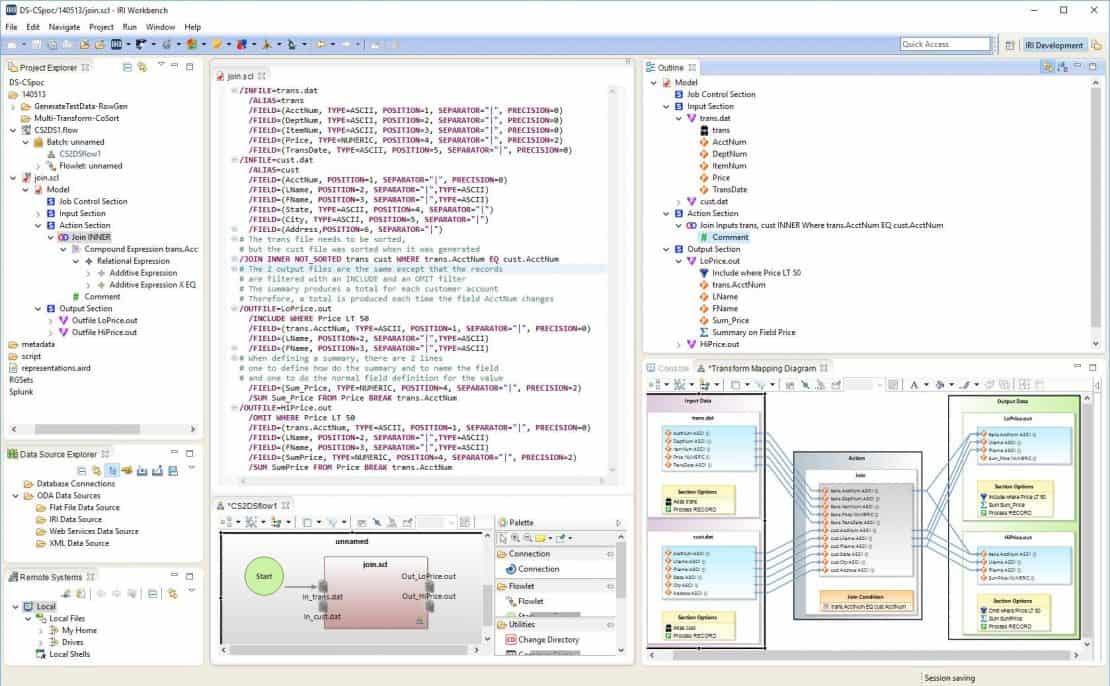Simple, Interoperable Metadata
SortCL: Data Definition and Manipulation 4GL
IT and data departments depend on metadata to understand their own systems, and to align their tools and processes. Some tools, however, use:
- cryptic metadata that is not easily understood
- hidden metadata so it cannot be modified
- binary metadata other tools cannot use
The metadata used in the IRI CoSort package, the IRI Voracity data management (and ETL) platform, and their fit-for-purpose subset products (IRI NextForm, IRI FieldShield, and IRI RowGen), is in a familiar and self-documenting 4GL for data definition, manipulation (transformation, masking, cleansing, etc.) and mapping (reformatting and reporting) called SortCL.
Named for its legacy sort utility roots in 1992 after the "Sort Control Language" of VMS, SortCL has benefited from the clarity, velocity, reliability, and expandability of this syntax ever since. And today SortCL syntax and job management is fully supported in the free Eclipse IDE for all IRI product users, IRI Workbench.

SortCL allows application, DW, business, and data governance teams to describe their structured data sources, manipulations, and reports in a simple, common language. SortCL reduces definition complexity and the need for elaborate metadata maintenance through a simple, shared syntax managed in text files and Eclipse, shareable in the cloud, and compatible with mapping automation and metadata conversion technologies from AnalytiX DS (now Erwin) and MITI (MIMB).
SortCL defines the layout and manipulation of your data sources, processes, and targets for a wide range of applications and IRI software products. Whether you use IRI software to perform, speed, and/or or combine data transformation, migration, protection, or reporting, SortCL metadata defines it.
SortCL data definition files (.DDF) define the structure and appearance of source files and database tables. SortCL specification files (.SCL), or job scripts, refer to the .DDF layouts. .SCL files use the source field names as symbolic references for target field manipulation and mapping.

